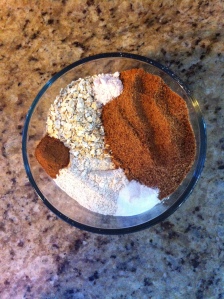I know, I know, “healthy cookie” seems like an oxymoron but just trust me that these cookies are as good for your taste buds as they are for your body. What makes them so beneficial? A few key ingredient swaps.
I originally found this recipe in “Giada’s Feel Good Food” by Giada de Laurentiis. The recipe she gave was already incredibly healthier than most cookies we eat so I just tweaked it a little bit to make it even healthier. The first major change I made was to replace the all-purpose flour with whole grain spelt flour. Next, I used coconut palm sugar in place of the white sugar. These cookies are chewy, spicy, not too sweet, and just plain GOOD.
The Low Down on Spelt
Spelt is an ancient grain related to wheat which has a slightly sweet, nutty flavor. The whole grain is ground to make a flour that is the polar opposite of white flour. All-purpose white flour is devoid of nutrients. It has been so processed and refined that it is nothing but empty calories. By contrast, spelt flour offers protein, fiber, and an array of vitamins and minerals.
Coconut Palm Sugar: A Sweeter Alternative
Similar to white flour, white sugar is incredibly refined and has had all of its nutrients removed. Recently, scientists have proven that white sugar is as addictive as cocaine! If that isn’t reason enough to look for an alternative then I don’t know what is. Luckily, there are many sugar alternatives on the market to choose from. Coconut palm sugar is made from the flowers on a coconut palm tree. It is low on the glycemic index and has a good amount of fiber which means that it won’t cause blood sugar to spike. It also provides minerals, vitamins, and amino acids.
Now for the best part: making the cookies!
Ingredients:

- 1 cup whole grain spelt flour
- 2/3 cup old-fashioned oats
- 1 teaspoon ground cinnamon
- 1/2 teaspoon baking soda
- 1/2 teaspoon sea salt
- 3/4 cup coconut palm sugar
- 1/2 cup canned pumpkin puree
- 1/3 cup coconut oil, melted
- 1 tablespoon agave syrup
- 1 teaspoon vanilla extract
- 1/2 cup raisins
The Process
- Preheat oven to 350 degrees.

2. In a small bowl mix the flour, oats, cinnamon, baking soda, sea salt, and coconut palm sugar.

3. In a large bowl mix the pumpkin puree, coconut oil, agave syrup, and vanilla extract.

4. Add the dry mixture to the wet mixture and combine. The dough will be sticky.

5. Fold in the raisins.

6. Line two cookie sheets with parchment paper or Silpat.

7. Roll the dough into balls and place on the sheets. I made my dough balls roughly two tablespoons each. The cookies will not spread much so they can be placed close together as shown.

8. Bake cookies for 16 minutes or until the tops of the cookies are no longer sticky.
9. Transfer cookies to wire racks to cool. Enjoy the cookies warm!

If you would like to try out more recipes that use spelt flour check out the Banana Bread and Pumpkin Bread from My New Roots. The pumpkin bread is incredible drizzled with some honey!








